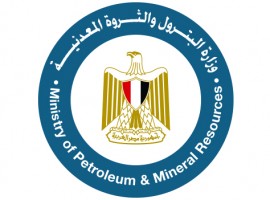Decommissioning of oil and gas activities is one of the important topics that need more intention from the stakeholders worldwide. It faces some challenges especially from the legal perspective and regulatory framework. Egypt is one of the countries that confront this issue especially when it comes to the payment of associated costs.
The paper in question is “The decommissioning of oil and gas fields: Egyptian law and policy” and is written by Mostafa Elshazly, a Senior Associate at Zaki Hashem and Partners. The paper was published in the Journal of World Energy Law and Business, Oxford Academic in 2019.
What is Decommissioning?
The decommissioning in the oil and gas field is the final phase of the project which means the activities related to the abandonment of petroleum production wells and the removal of onshore and offshore installations. This process includes clearing and filling the well as well as removing the infrastructure and platform to restore the site of operation to its original state.
Decommissioning is a non-profit activity and it should be done either by the international oil companies (IOCs) or national oil companies (NOCs). It requires reallocation of profits and the procurement of finances to perform it. Most of the petroleum regulations oblige the concessionaire to implement the decommissioning program in most of the countries which produce oil. However, the mechanisms for executing decommissioning differ from one country to another.
According to the author, there are no comprehensive legislative tools to regulate this aspect in Egypt noting that the regulatory framework varies between NOCs which could lead to conflicts between IOCs and NOCs.
Egyptian case
In Egypt, the Ministry of Petroleum and Mineral Resources (MoP) is the authority which is responsible for shaping the policies and strategies of oil and gas operations through the Egyptian General Petroleum Corporation (EGPC), the Egyptian Natural Gas Holding Company (EGAS) and the Ganoub El Wadi Petroleum Holding Company (GANOPE).
The paper stated that Egypt regulates its oil and gas resources exploitation through conducting Production Sharing Agreements (PSAs). These PSAs are signed between the MoP, a relevant IOC as a contractor and a relevant NOC which could be EGPC, EGAS or GANOPE.
According to Article 32 of the Egyptian Constitution of 2014, all oil and gas resources are under the control of the state which can grant the right of exploiting natural resources according to a law for a period not exceeds 30 years. These laws follow a standard format with limited deviation.
Additionally, another legislation is provided by the Mines and Quarries Law No 66 of 1953, along with its executive regulation known as the Petroleum Law and by the Environment Law No 4 of 1994 and its executive regulations. However, these laws don’t include comprehensive rules for oil and gas decommissioning.
Decommission Arrangements through Egypt’s NOCs
Despite the limited deviation in the model agreements which have been adopted for petroleum exploitation by each of EGPC, EGAS and GANOPE, the mechanism for implementing decommissioning is different in each NOC’s model PSA. For example, EGPC didn’t introduce clear and standard rules that regulate decommissioning activities until now. In the early 1960s, it signed agreements with a minimum scope on this topic. One of these agreements in 1964 minimized the scope of the decommissioning obligation to implement decommissioning programs only in the case of the permanent abandonment of oil wells.
By 2015, EGPC adopted a new mechanism for decommissioning in which the contractor was committed to restoring the contract area to its original conditions that it was in at the time it was awarded to the contractor. But this language was criticized by IOCs because it entailed significant expenditure to carry out decommissioning activities. In addition, this obligation might be imposed at the time of relinquishment so that the contractor might not obtain a full cost recovery.
Additionally, EGPC adopted a new model through issuing Article 5 of the current model forming PSA stating that the contractor shall ensure that all environmental regulations in the country have been followed under the accepted petroleum industry practices at the time of relinquishment of the expiry date. However, this language did not identify real commitment by the contractor for decommissioning leaving this topic in a grey area.
As for GANOPE, its latest PSA model in 2016 stated that the contractor shall restore the concession area at the time of relinquishment to its original condition and to the condition requested by GANOPE. Yet, this model is still generic and makes the contractor would not be able to assess the decommissioning obligations that might be imposed by Ganope at the time of relinquishment of the contract area.
EGAS introduced more comprehensive decommissioning procedures in its PSA model. It included that the contractor has to restore the contract area to its original state as when it was received according to good petroleum industry practices. Also, the contractor should submit a decommissioning plan describing decommissioning procedures and estimated costs that should be approved by EGAS. Furthermore, a cost recovery mechanism is established, enabling the Contactor to recover all the decommissioning costs properly. A bank account is required to be opened with a bank approved by EGAS and the Contractor, dedicated to the management of the decommissioning fund for the implementation of the decommissioning program for the developed areas. Decommissioning practices will be done during the last five years of the lease. Additionally, if petroleum production is continued in the contract area by any entity other than the contractor, EGAS will be responsible for implementing the decommissioning procedures.
Conclusion
The author ended his paper, suggesting clear provisions that can regulate decommissioning procedures between NOCs and IOCs at the early stages of the projects. Firstly, the contractor should implement decommissioning at each time it relinquishes a portion of the contract area and weigh up between the need for decommissioning against the possible need for the continuing use of certain infrastructure items.
Second, a decommissioning plan should be made at the first stages of project, and approved by the relevant NOC and the successful completion of decommissioning should be confirmed by a certificate of performance. Thirdly, the funds allocated for the decommissioning plan should be deposited into a bank account. Fourthly, approved decommissioning costs will be recoverable.
According to the paper, in order to enhance the attractiveness of the Egyptian petroleum sector to potential investors, it is a must for NOCs to provide contractual models reflecting a clear, unified and comprehensive policy regarding the decommissioning of oil and gas fields and related infrastructure.








